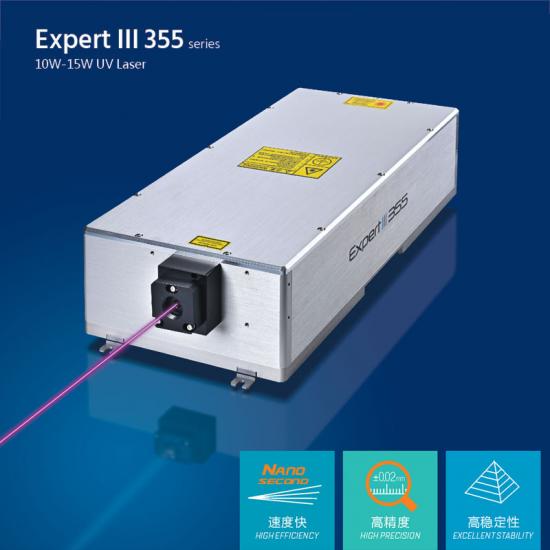마이크로 전자 공학 처리 응용 분야가 UV 레이저의 이점을 얻는 이유
Mar 22 , 2022마이크로 전자 공학 처리 응용 분야가 UV 레이저의 이점을 얻는 이유
마이크로 전자 공학 처리 응용 분야가 UV 레이저의 이점을 얻는 이유
UV 레이저는 특히 마이크로일렉트로닉스 및 디스플레이 제작과 같은 광범위한 산업 작업에 동력을 공급합니다. UV 광은 부품에 대한 열 손상이 적고 더 높은 정밀도로 미세 가공 및 기타 구조화 작업을 가능하게 하는 고유한 속성을 가지고 있기 때문입니다.
UV 레이저가 이를 수행할 수 있는 세 가지 큰 이유가 있습니다. 첫째, 플라스틱, 유기 재료, 금속 및 반도체와 같은 거의 모든 것이 자외선을 강력하게 흡수합니다. 따라서 레이저 에너지는 재료를 바로 통과하는 것이 아니라 재료를 효과적으로 처리합니다. 이것은 또한 UV 레이저가 마이크로 전자 공학 및 기타 산업에서 점점 더 많이 사용되는 복합 재료 및 다층 재료 작업에 특히 능숙하게 만듭니다.

자외선 레이저 | 녹색 레이저 | 자외선 레이저 | 자외선 dpss 레이저 | 나노초 레이저 | UV 레이저 소스 | 고체 레이저
Second, high absorption also means that the UV laser light doesn’t penetrate far into a material, effectively minimizing the size of the so-called “heat-affected zone.” The HAZ is the area surrounding the laser-produced feature (cut, hole, etc.) which might be damaged or have its properties altered by the laser light.
Third, UV light can be focused down better than longer wavelength visible or infrared (IR) light. This means a UV laser can make smaller holes or narrower cuts.
Nanosecond Lasers hit the "Sweet Spot”
Nanosecond pulse-width, diode-pumped, solid-state lasers are the most popular industrial UV source, because they represent the “sweet spot” for most manufacturers. They’re economically attractive (in terms of $ per watt), typically operate at relatively high pulse repetition rates, and are also available with fairly high output powers. This delivers cost-effective, high-throughput production.
But manufacturers are always seeking to further improve their processes and reduce costs. In terms of the laser source, this often means higher output power, because this usually enables increased process throughput.
There’s just one little problem with doing that with solid-state UV lasers. (Actually, there’s a bunch, but we’re just going to talk about one of them here!) This is because solid-state lasers emit infrared (IR) light. So, a third harmonic generation (THG) crystal is used inside the laser to convert the IR light to UV.
But, remember how UV light is absorbed so well in most materials? That means that it’s really hard to avoid at least some absorption of the laser energy in the THG crystal. And, because it’s inside the laser, the THG crystal is exposed to a lot of UV light.
One solution to this problem is to build a mechanism right into the laser that periodically physically moves the THG crystal. The idea is to keep changing where the laser beam is focused in the crystal before it catastrophically fails at any particular location.
This approach works well, and has used it for years on our products. Obviously, though, it increases the cost and complexity of the laser. Plus, every time the crystal is shifted to a new position, there are subtle changes to the output power and other beam parameters that can affect the process and therefore part quality.
Another approach is simply to ignore the problem altogether, and keep the THG crystal in a single spot until the laser dies. This makes the laser head much less expensive, and is a great idea as long as you don’t mind low laser reliability, poor output consistency, or short lifetime (<3000 hours).